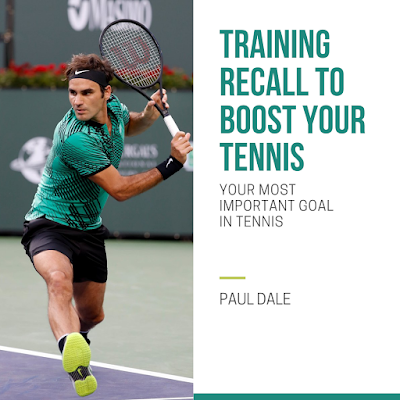TRAINING RECALL IN YOUR PLAYERS
I’m not a fan of using repetition to practice when training players. I use repetition drills very rarely. Repetition drills are when a player has to hit many balls one after the other, either from a basket feed or with someone at the other end giving you the same ball.
Repetition drills contain very little that is similar to match-play. I understand it looks good to people watching the lesson from a distance outside the court and on Instagram posts but repetition drills offer very little to players wanting to develop a new technique or pattern for their next match.
This is false. It’s the coach’s job to introduce the new technique AND to create a 'bridge' to match-play so that the player can integrate what they have been taught.
Part of creating that “Bridge” is the ability to recall the key elements of the new technique. By training the recall abilities of the player you are ensuring a smooth transition from the practice court to match court.
I focus mostly on training a player’s RECALL of a new stroke or match-play pattern. Here’s an example that can be used by you for any stroke or pattern you desire…
'John' was trying to improve his serve so that it’s a bigger weapon and can do more damage to his opponent in matches.
I worked with John on his front foot, in the knowledge that a technically better front foot will improve his timing, and power, and that will translate into a much better service weapon.
This is the stage I deviate from conventional training methods. Many coaches would have John hit from a basket, perfecting the serve and the front foot in particular for the remainder of the lesson.
This is the 'Repetition Method' of teaching a stroke. With basket repetition, the player is solely practicing technique through muscle memory.
Training a player using the 'Recall Method' is different and much more effective than the repetition method, especially later when the player needs to use the technique in matches and under pressure.
Here’s how I trained John’s ability to recall the key elements of the front foot. There were 5 key components I used that you need to be aware of when training your players:
COMMON ERRORS
John and I took note of the common errors that were occurring as he tried to implement the improved front foot during the serve.
By identifying the most common errors that occur the player can focus on these common errors and be more aware of their remedies.
STRENGTHS AND WEAKNESSES
I asked John which service target was his least preferred option when serving and he told me it was the serve down the 'T' (middle) on the deuce side.
This is where we focused our attention mostly on the drills and points that followed.
Make the player aware and practice those vulnerable parts of a player’s new technique that have the potential to cause problems later in matches.
'POINT' FOCUSED
After a very short time of showing John the front foot technique, we very quickly progressed to playing points.
If you are training tennis players always remember that tennis is competitive and includes scoring… all new techniques must be taught with the understanding that the new technique must help the player win points and that it must hold up under pressure in matches.
CONSEQUENCES
If there were no consequences to us making errors or playing poorly what would be the point in trying to improve!
Creating consequences for John helped him improve the front foot faster. While playing points John was faced with the following consequences (you can try to introduce these consequences to your players also):
Creating consequences for John helped him improve the front foot faster. While playing points John was faced with the following consequences (you can try to introduce these consequences to your players also):
He got immediate feedback on his new front foot technique based on whether the ball went in or out – consequences!
DECISIONS: Serving from a basket (repetition) doesn’t involve decisions on what type of serve you want to hit. During the points, the decisions John made each time he served had consequences.
He had to perform the new front foot technique and make good decisions about the speed and placement of the serve and live with the consequences such as his opponent attacking his 2nd serve, approaching the net on the Return, or simply continually putting him under pressure because his serve is not good enough.
By teaching recall whenever you work on a new stroke or pattern you are ensuring that the player is prepared for up-coming both technically and mentally.





%20copy.png)


Comments
Post a Comment